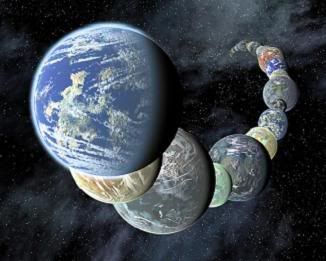|
|
Post by glactus on Feb 19, 2008 20:17:37 GMT
 Astronomers have found numerous Jupiter-like planets orbiting other stars. But because of the limits of our current technology, they haven’t yet found any other terrestrial Earth-like planets out in the universe. But new findings from the Spitzer Space Telescope suggest that terrestrial planets might form around many, if not most, of the nearby sun-like stars in our galaxy. So perhaps, other worlds with the potential for life might be more common than we thought. A group of astronomers led by Michael Meyer of the University of Tucson, Arizona used Spitzer to survey six sets of stars with masses comparable to our sun, and grouped them by age. Our sun is about 4.6 billion years old. They found that at least 20 percent, and possibly as many as 60 percent, of stars similar to the sun are candidates for forming rocky planets. "However, smaller, less massive disks will light up later. Planet formation in this case is delayed because there are fewer particles to collide with each other." More definitive data on formation of rocky planets will come with the launch of the Kepler mission in 2009, which will search to find if terrestrial planets like Earth could be common around stars like the sun.  Art planets  credits: This is part text only.See image, full text and all scientists involved at universetoday.com www.universetoday.com/2008/02/18/rocky-planets-may-form-around-most-sun-like-stars/#more-12843Article credit: Nancy Atkinson |
|
|
|
Post by Andy Mac on Feb 19, 2008 21:25:48 GMT
We shall await the Kepler mission results with baited breath! IMO there are bound to be a plentiful supply of rocky planets out there; some of which should harbour life forms.
|
|